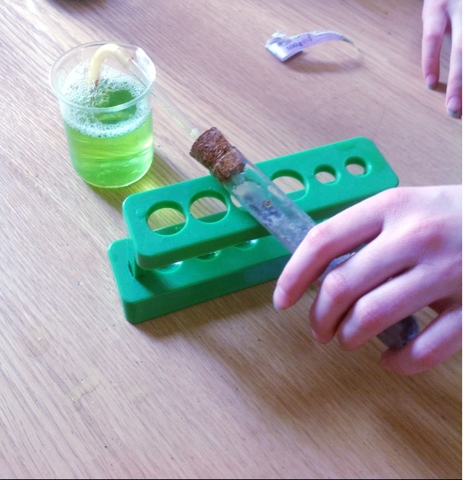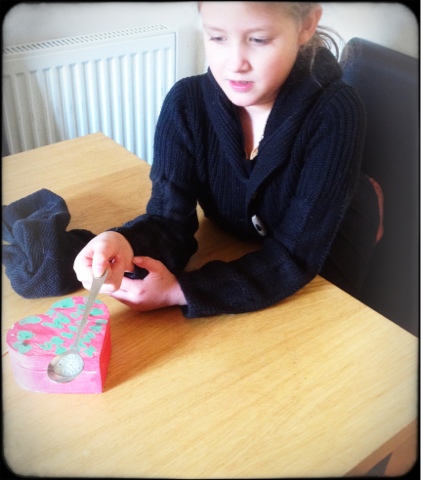Making Hydrogen go POP!
This is a really fun experiment but it does involve somedangerous chemicals so a responsible adult must supervise at all times.
What you will need:
· A test tube with a cork stopper with a hole to put a tube through.
· A test tube rack, an 80ml to 100ml measuring jug
· Washing up liquid
· Water
· Hydrochloric Acid
· Iron nails or iron filings
· A spoon
· Matches or a lighter
What you will need to do -
Fill your measuring jug with 40ml of washing up liquid and40ml of water.
Fill your test tube half full with the hydrochloric acid – BE CAREFUL WHEN DOING THIS AS IT IS AHIGHLY CORROSIVE ACID AND WHEN ADDING IT TO A METAL HAS AN EXOTHERMIC REACTION (exothermic reaction means a chemical reaction accompanied by the evolution of heat).
Carefullyadd 2.5ml of iron fillings or a couple of iron nails to your hydrochloric acidin the test tube. Put the stopper on and place the end of the flexible tube from the stopper into the jug, or container filled with your washing up liquid solution.
What do you notice?
The washing up liquid solution should be bubbling. Take some bubbles on a spoon and as quickly as you can light the bubbles.
What happens?
You hear a loud pop! This is the hydrogen that is caught in the soap bubbles! Cool isn’t it!
So how and why has this happened?
Well when you mix iron with hydrochloric acid you get Iron(II) Chloride and hydrogen gas. It is this gas that we then trap in the bubbles in the washing up liquid solution.
Fe + 2HCl =FeCl2 + H2
There are two molecules of hydrochloric acid when mixed with the iron those 2 parts will separate.The hydrogens will bond together to create hydrogen gas, and the two chlorides will bond with the Iron. This is knownas a displacement reaction.
There are two molecules of hydrochloric acid when mixed with the iron those 2 parts will separate.The hydrogens will bond together to create hydrogen gas, and the two chlorides will bond with the Iron. This is knownas a displacement reaction.
Why the pop?
Hydrogen is highly flammable and explodes because this energy is released in very high quantities over a short time. So it isanother reason to be very careful when doing this experiment!
SO BE SAFE BUT HAVE FUN!




No comments:
Post a Comment